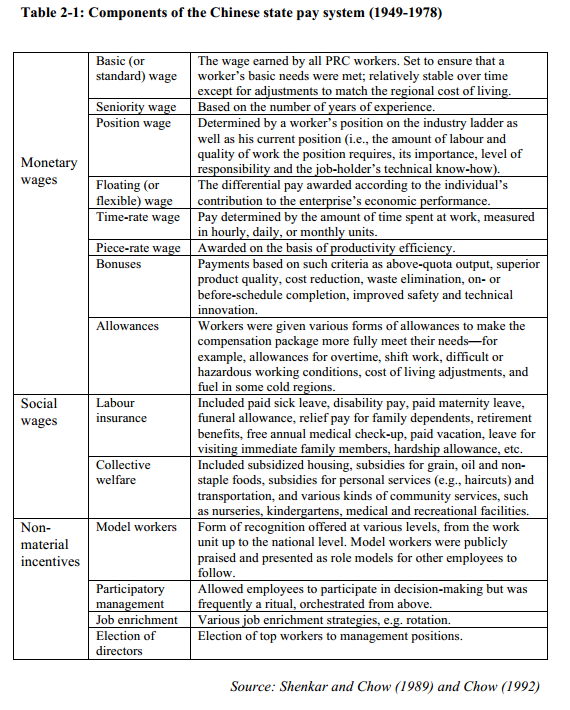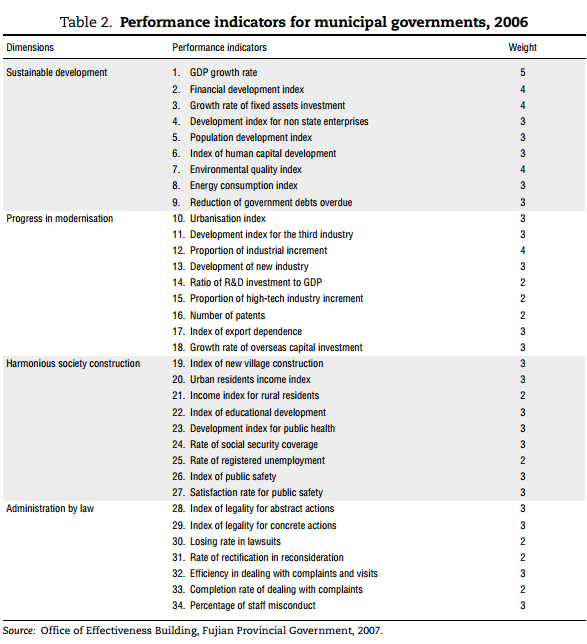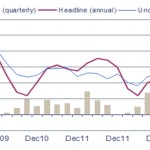Performance Management in the Government of China – a success story
The fact that China is rapidly emerging as one of the most powerful countries worldwide is no longer a secret. Besides its trading power, large population and Gross Domestic Product (GDP), China is also an example of good practice when it comes to its governmental administration. From at least the mid-1980s, the Chinese government has implemented a Performance Management system that has grown in complexity and sophistication.
Reforms and restructuring
Administrative reforms in China have long been centered on structural changes, as proven by the six rounds of large-scale re-organization campaigns conducted in 1982, 1988, 1993, 1998, 2003 and 2008, all of which were initiated by the central authority and implemented in a top-down manner. Restructuring has strengthened key regulatory agencies, although local management on important accountability and control functions, such as auditing, continues to be a problem.
Human Resources Management
A new civil service system was introduced in 1993, which promoted a human resource management that encourages selection based on merit and performance. The old system was focused on central planning, non-institutionalized performance appraisals and position-based pay. The new civil service system rewards performance and the officials’ drive for promotion has provided a powerful incentive for boosting China’s performance management regime.
In China, performance-related pay in the public sector unit (PSU) forms a cluster of public service providers operating alongside core government. When it comes to pay-for-performance plans, China has some particularities that are worth mentioning: the status/qualifications (family, education) of the individual are very important in evaluating performance, and employees rarely to almost never, contest a performance rating or challenge a manager.
The “Objective Responsibility System”
Emerging first at local government level, China’s “Objective Responsibility System” (ORS) involved setting objectives for subordinate government units and holding individual leaders responsible for their fulfillment. Following the principles of “management by objectives” (MBO), the ORS also involved goal setting and cascading objectives and targets down to individuals.
After years of practice within local governments, the central authorities have recently started to institutionalize the ORS as an important tool for improving governmental performance. An example of local initiatives taken over by the center is Shaanxi Province, which relies on monitoring local authorities, such as audit offices, that have interest in inflating the achievements of the local leadership group.
At different stages of this project, China focused, in turn, on each of the following: performance measurement, performance management and strategic planning.
Citizen participation in performance management
An example of a radical approach in this area is taking public assessment as the sole channel for governmental performance. A campaign inviting 10,000 people to assess the government’s performance of was launched in many cities like Zhuhai, Shenyang and Nanjing. In the latter city, public assessment covered three main areas: government work style, integrity and clean government. Information drafted on the results obtained from the campaign was incremental in designing future directions and objectives for governmental institutions.
Over the past 15 years, China’s public sector performance has evolved quickly, and the focus seems to have moved from a rapid economic growth to social and public functions, sustainable development, administrative law and human development needs.
References
- Burns, J.P. and Zhiren, Z. (2010), Performance management in the Government of the People’s Republic of China: Accountability and control in the implementation of public policy, OECD Journal on Budgeting
- Vilet, J. (2013), Pay for performance: How it is viewed around the world, TLNT
- Weng, J. (2012), Pay system reforms in public service units in contemporary China: The implementation and impact of performance-related pay
Image sources:
- Quick take Bloomberg
- Burns, J.P. and Zhiren, Z. (2010), Performance management in the Government of the People’s Republic of China: Accountability and control in the implementation of public policy, OECD Journal on Budgeting
- Weng, J. (2012), Pay system reforms in public service units in contemporary China: The implementation and impact of performance-related pay

Tags: Government - State / Federal performance, Government performance, Performance in China, Performance Management, Strategy








